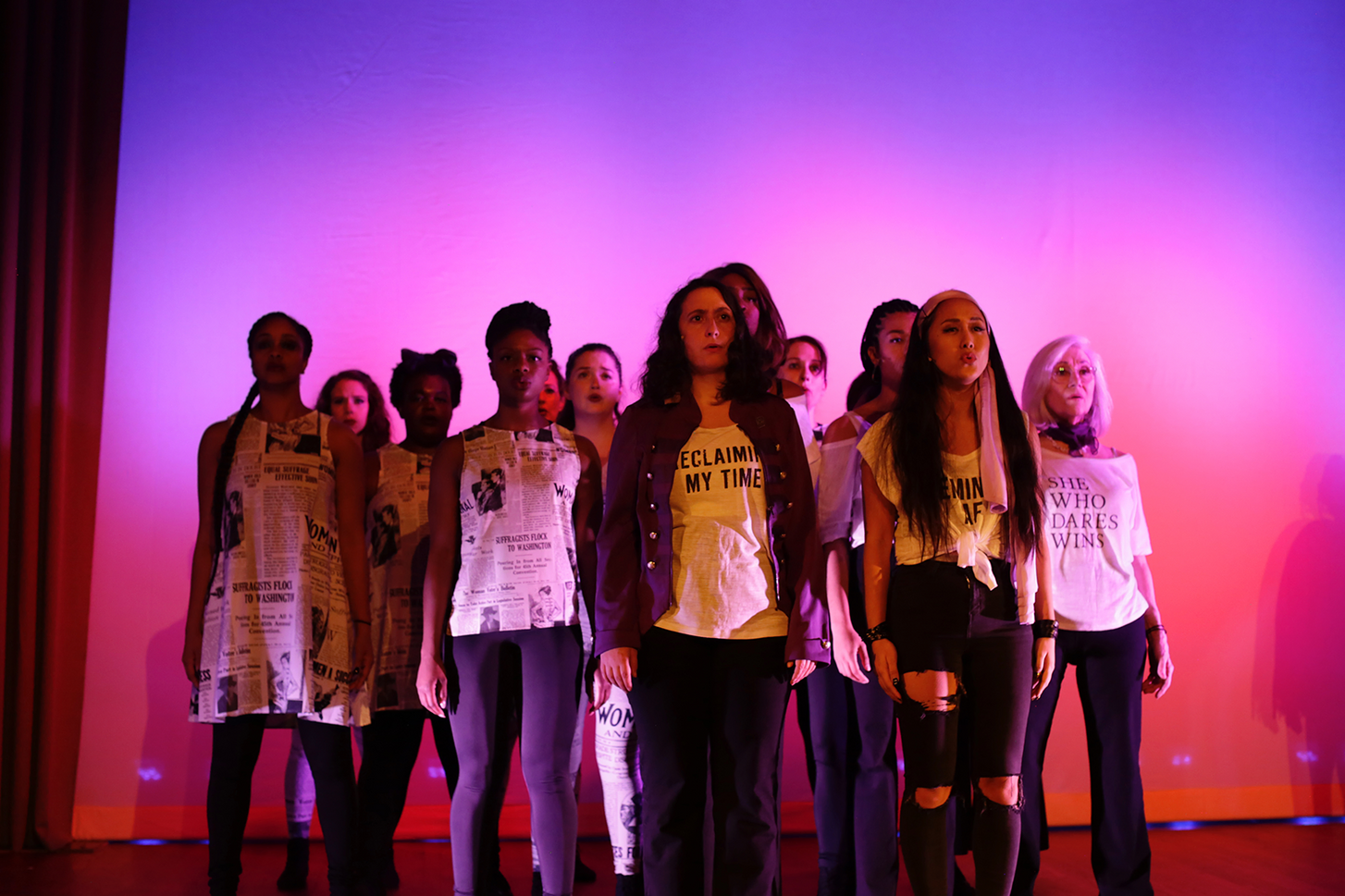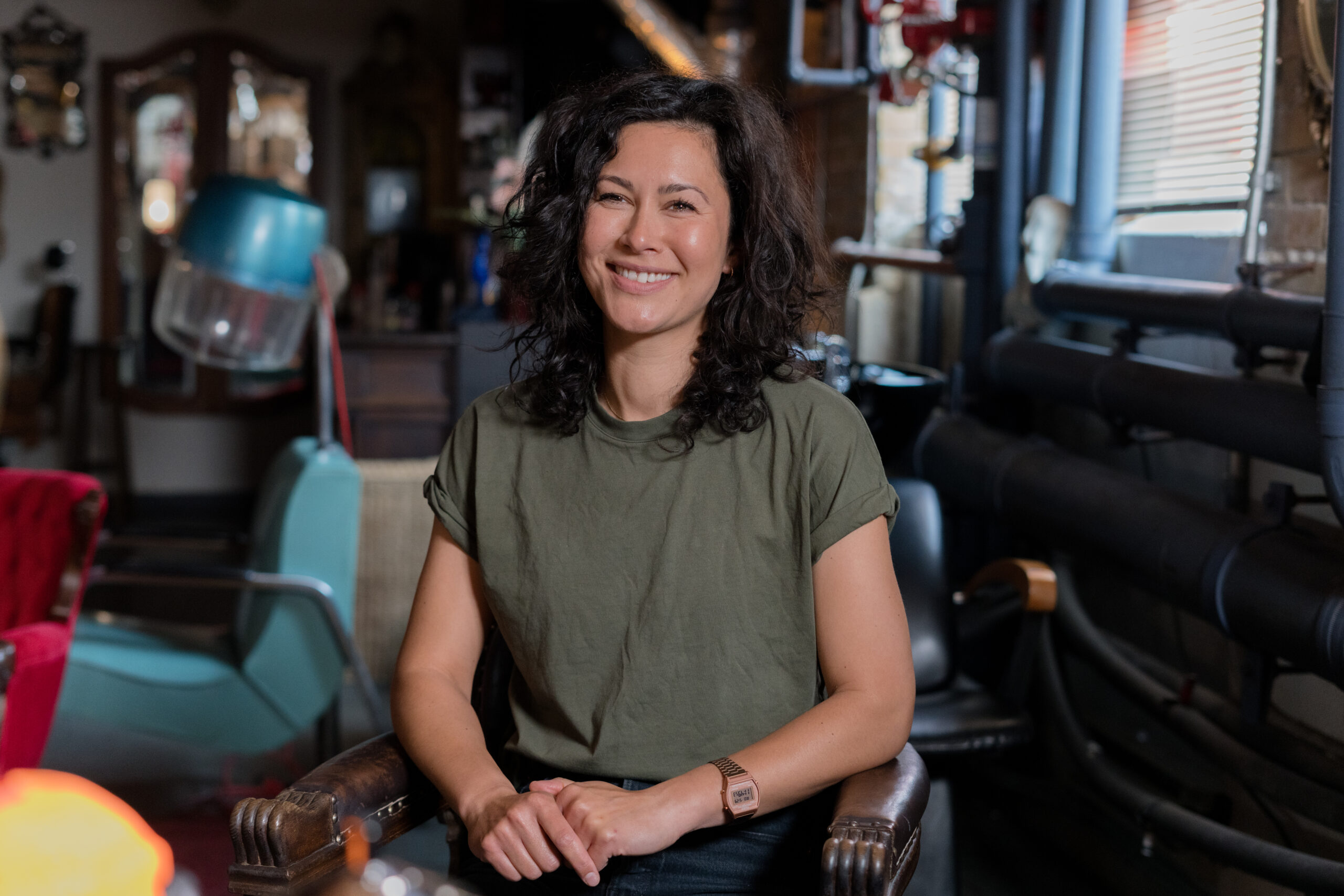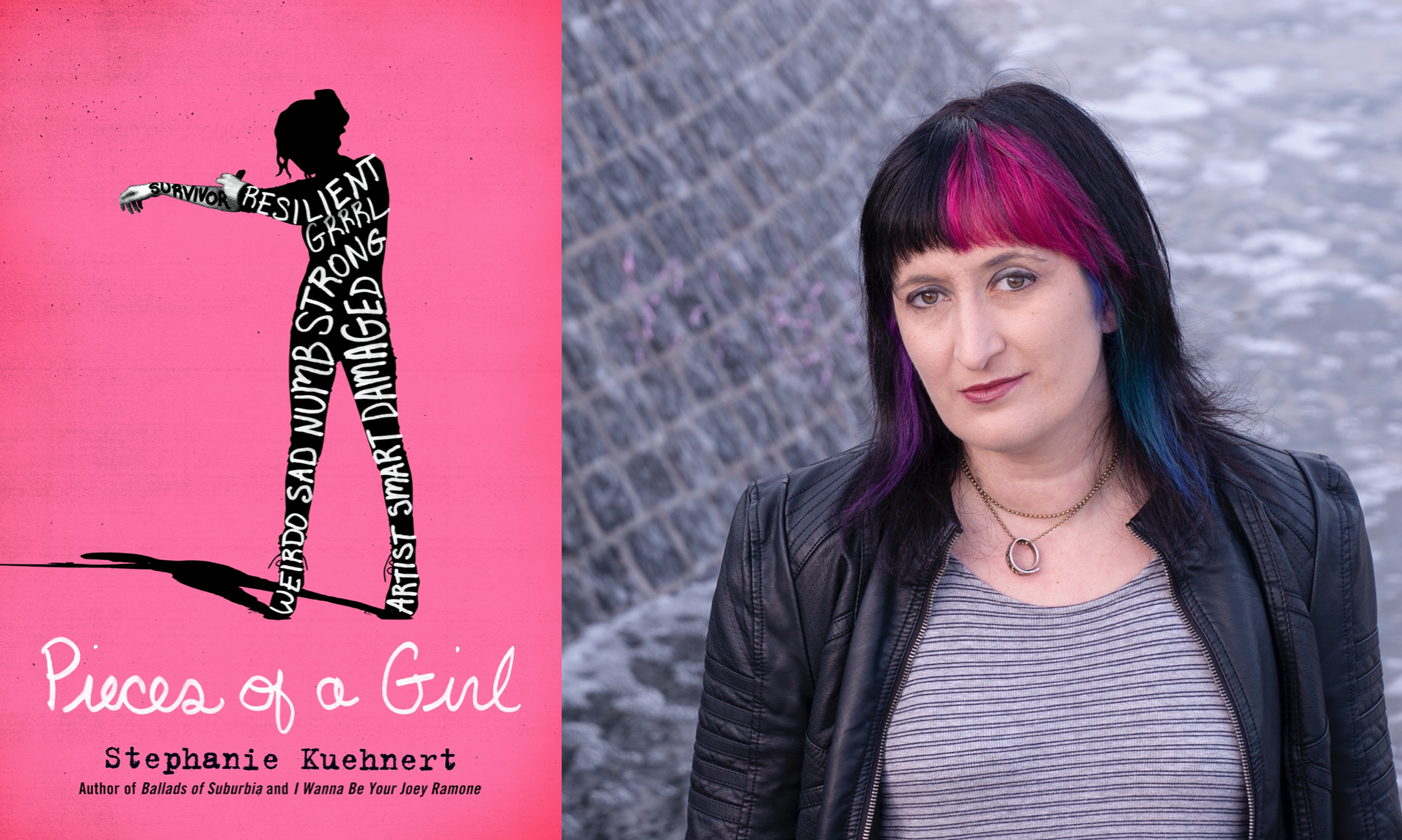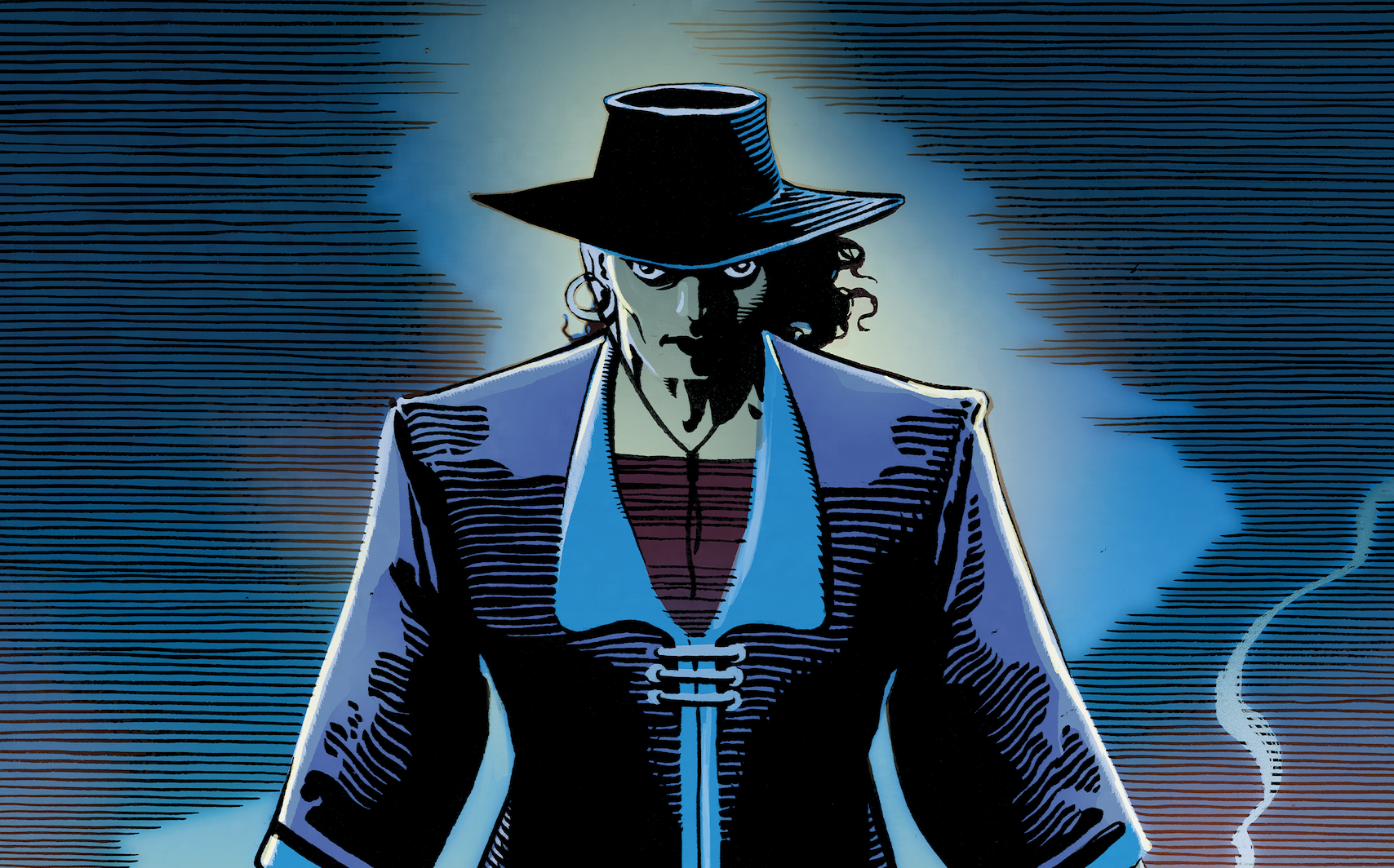
Humor is a very powerful storytelling tool. It is so much more than just a tool to make us laugh. In many ways, comedy is the ultimate bait and switch, sneaking past our defenses to introduce perspectives on topics we may normally shy away from if it is too serious or heavy, especially in film and television.
Humor is the vehicle employed by Canadian award-winning sibling filmmakers Laurel and Brendan Brady in their new short film ‘Chronic’, loosely based on Laurel’s real life experience recovering after work-related injury in 2019.
‘Chronic’ follows Frankie, played by Nadine Bhabha (‘Letterkenny’), who struggles to accept the harsh reality of a recent brain injury. Her denial persists until she reluctantly attends a disastrous birthday party thrown by her inconsiderate best friend. This event becomes a wake-up call, prompting her to re-evaluate her friendships and her approach to life.
Frankie feels like sh*t. But when she gets woken up by a call from her “bestie,” asking, “Where are you…it’s my birthday!?” Frankie does what any 24-year-old dealing with a concussion would do– get up, put on her cutest neck brace, follow her concussion protocols, and get ready to party. Even if doing so means she’s dizzy, nauseous, and wants to die. When Frankie shows up at the loud and crowded bar after weeks of bed rest, she expects her friends to be empathetic and finally ask her, “You okay, babe?”
Only the shots are flowing, and no one has time for a boring brain injury. Frankie does her best to “keep up” with her friends until doing so causes her to re-injure herself. The following day, in pain and isolated, Frankie accepts her reality by finally attending a support group. The film also stars Aviva Mongillo (‘Workin’ Moms’), and Prince Amponsah (‘Station Eleven’).

In a press release, Laurel says writing this film was not only cathartic for her, but enabled her to process the prolonged pain and recovery, along with explaining to her friends and colleagues the reality of living with a serious injury. What was initially diagnosed as a mild concussion where she was told it would heal in a couple of days or weeks, turned into six months on bed rest, chronic headaches and pain, and going on social assistance.
“I was trying to explain over and over again to kind but clueless loved ones/colleagues that despite how casually concussions are portrayed in TV and Film, it’s actually a brain injury that can be incredibly debilitating and life-altering,” said Laurel.
“I wanted to be as specific and raw with Frankie’s experience to allow folks living with a disability (and those without) to empathize with her, mimic the well-meaning but sometimes aggravating platitudes or foot-in-mouth foolery people say to those who are ill or living with a disability, but I also wanted it to be funny and entertaining and high energy.”
‘Chronic’ was initially created as a half-hour television series with the pilot being named a semi-finalist at the Screencraft TV Pilot Competition in 2022. The film has previously screened at multiple notable festivals, including The Portland Comedy Film Festival, The Los Angeles Comedy Film Festival, The Austin Comedy Film Festival, the BAFTA-qualifying Superfest Disability Film Festival, and the Great Canadian Film Festival.
As the filmmakers get set to release the film to the public in January on Youtube, we had the chance to speak with Laurel about making ‘Chronic’ with her brother (who has his own experience dealing with Chronic pain), drawing on her real life experience, and what she wants audiences to learn from the film.
Where did your filmmaking career begin, and what made you want to pursue a career in film and theatre?
I’ve been passionate about storytelling and writing in all forms for as long as I can remember. I went to York University for Theatre and started my career writing, acting, and producing Theatre, which I absolutely loved. Then, in 2017, I transitioned into film and TV. In 2018, I was one of five writers accepted into the Canadian Film Centre’s Writers Lab, which was a real launching point for my film career. Now I work as a writer and creator as well as a story editor and story consultant.
You work closely with your brother Brendan. What is your process like? How do you work through challenges and compliment each other?
Brendan and I have collaborated a number of times at this point. For Chronic, I wrote the pilot and showed it to Brendan, who loved it and suggested I write the short to prove that we could execute something about Chronic pain and disability that was also funny. Naturally, he was my first choice as director.
We’re both fantastic at elevating each other’s work. I also trust, respect, and admire Brendan’s artistry implicitly. He is a fantastic director with a clear and collaborative vision and a calm leader who can fight for what he wants. Brendan makes everyone feel cared for and heard, so that’s a beautiful quality in a director. One I look out for whenever I’m collaborating.
We also share the same gallows humor, and he makes me laugh like no one else. And, of course, there are times when, because we are siblings, we push each other’s buttons. But we try to refocus on our common goal, which works most of the time, ha. Thankfully, we have built-in trust that we can repair if we get too “hangry” or have a bad day.
Tell us about your new film ‘Chronic’ – where did the story originate, and why did you want to make this?
I sustained mild traumatic brain injury and whiplash from a work-related injury back in 2019. It was an incredibly painful, debilitating, and extremely lonely experience. After a brief attempt at going back to work, my injury was too severe, and I wasn’t allowed to work for six months. It blew up my life physically, emotionally, and financially. It’s taken me years to heal, and even now, I still experience pain and aftereffects from that injury.
I initially wrote the drama-comedy TV pilot version of “Chronic” ten months after my injury and soon after wrote the short to explore the terrible, misunderstood (and sometimes darkly funny experience) of going through a brain injury and act as proof of concept for the larger project.
The short is about Frankie, a 24-year-old young woman with a recent brain and whiplash who regrettably attends a thoughtless friend’s birthday party from hell, and, through this terrible night, she’s forced to reexamine her friendships, accept her injury, and connect with a group of people who understand her experience.
I wanted to touch on the private grief around experiencing a body and mind that have been changed due to injury and illness while also exploring the situational comedy of navigating this new reality. It shows how a situation can be deeply terrible but darkly funny. After my injury, I found many people didn’t necessarily understand what a brain injury feels like or how debilitating it can be, so I wanted to infuse the short with some hyper-extreme versions of loved ones not quite getting it or being thoughtless juxtaposed with the relief of finally connecting with folks who do—and adding moments of humor because that’s how I cope with life.
CHRONIC will be released online on YouTube on January 31st, 2024. It was written by me, directed by Brendan Brady, and co-produced by the two of us. Our father, David Brady, was the E.P. along with “honorary Brady” and E.P. Sonny Goldstein. So, this, indeed, was a family affair. Our hope is that this short-form project will get the chance to be seen by audiences, create some laughter, relatability, and hope, and *fingers crossed* allow us to make the longer-form version of CHRONIC.
Drawing on your own experience following a brain injury in 2019, how has creativity and filmmaking become a way for you to process what you went through?
I wasn’t able to write, concentrate, or sit up comfortably for a long time after my accident. I spent a long time after my injury in bed or lying down, usually crying because I was so depressed, in pain, and unable to do much. I had to retrain my brain to focus and look at screens in five-minute increments. Needless to say, it was incredibly painful, frustrating, and scary.
But there were moments when I started laughing because I could see my life as if it were a story and I was the lost main character in act one of her journey. And I don’t know, there’s something so horrible yet darkly funny about being in such a bad spot that I profoundly relate to any similar experience portrayed on screen. I kept promising myself through my healing process, “One day, I will write about this! And it will show just how specific, awful, and, yes, at times, funny this all is.” I found the whole experience of writing, producing, and eventually screening it to be incredibly cathartic.
The industry is very lacking in disability representation generally, although there is some change happening. How important is it for independent creators like you (and Brendan) to have your work amplified, especially when you can show new perspectives on issues that aren’t included?
Having independent stories amplified matters since so many decisions about what gets put into development or greenlit or what returns for another season are based on eyeballs, shares, and whether networks, broadcasters, or streamers think audiences will be interested in watching your show. This is especially true for projects considered “niche,” which ours absolutely is; You have to prove that your project will connect with larger groups of people. For independent creators, shout-outs, shares, or engagement on YOUTUBE, VIMEO, or social media helps.
We hope that after our online release on January 31st, Chronic will reach as many people as possible and get audience engagement, allowing us to prove that there is an audience for this type of story. Moving forward, we hope to collaborate with other writers, actors, and crew living with pain, disability, and illness so that even more people’s experiences can be enjoyed and experienced by audiences. Story-wise, this is teased at the end of the short.
You have used humor as a creative tool for empathy and understanding. Can you talk about the way comedy is able to penetrate barriers and create empathy for topics that don’t always impact us personally?
As a person, I 100% use humor to cope, and Chronic really reflects that. Comedy has the ability to open audiences up to be able to hear and empathize with tougher conversations that they wouldn’t necessarily be open to or have experienced! Perhaps it’s because folks are innocently enjoying the ride and laughing (or perhaps cringing), and then BOOM – we hit them with these real, heartbreaking moments where audiences have no choice but to experience Frankie’s pain firsthand.
There is a vulnerability to laughter, and many of us use jokes to talk about what we’re really trying to say, so, a lot of times, comedy has this great capacity to showcase truth and be reflective of real life conversations.
The film also sheds light on the well-meaning but sometimes aggravating platitudes or foot-in-mouth foolery people say to those who are ill or living with a disability. Can you talk more about this and why you wanted to have that discussion through Frankie’s story?
I wanted CHRONIC to touch upon the well-meaning yet frustrating platitudes or behavior that folks living with a disability or injury often swallow to make others comfortable. The big one present in our film is how brain injuries can often be misunderstood, downplayed, or written off completely because it’s “invisible.” However, let’s be honest; this misunderstanding extends to many illnesses and disabilities. Both invisible and not.
The other nuance our film is playing with is that, like many things in life, two things can be true at once. A friend or loved one can both love and care for you and want you to feel better, AND they also can say the absolute wrong thing or accidentally be callous. Not because they’re trying to be a bad person, but because they don’t know what to say! There is something so human about this that I wanted to put this into the film.
There is also a consideration that Frankie’s friends are quite young in the film. They don’t necessarily have the life experience to truly understand the concept that bodies and brains can be altered or hurt, especially when their friend looks “the same.” I think this comes with age or maybe life experience. On this night, Frankie’s friend group are drunk, self-obsessed, and want to party with “the old Frankie,” which isn’t an excuse, but it is a consideration for their motivation.
I also wanted to touch on the reality that throughout our lives, we all have moments where we fail each other. Those big life events, such as break-ups, deaths, and illness, where all of us aren’t sure how to talk to our friends.
I definitely experienced people trying to say the right thing after my injury and failing miserably or accidentally making a joke when I was having a soul-crushing day. The film’s version of this is extreme, but I think this also speaks to Frankie’s headspace and how raw she feels. I’d like to think that Frankie’s friends would get a chance to make things right in a longer form version.
What are some of the main messages you wanted to share with audiences about living with a chronic illness, invisible disability, and dealing with life-altering pain/injury?
I think some folks, like myself, need permission to hold the duality that an experience can be incredibly challenging and angering while also knowing that you can still have laughter and joy in your life.
We hope audience members with a disability or chronic pain can chuckle at Chronic’s dark humor, see themselves reflected in Frankie, and perhaps share the film with loved ones who may not understand their lived experience. One audience member described our film as a beautiful invitation for folks who don’t know what it’s like living with a disability or illness, which is honestly the best compliment in the world. We also hope audiences without this experience can be entertained, empathize, laugh, and experience the reality of brain injury and pain through Frankie’s POV.
So often, stories about disability or illness lack levity. While showing this experience’s seriousness is important, I wanted to create a film that reflected the light and the dark of a brain injury because that was how I experienced it. I could be crying in pain and frustration one moment and laughing about how absurd and terrible everything was the next. There’s something so universal and vital about using humor as a coping mechanism or release valve. I don’t know where I’d be without my sense of humor, and I think MANY people feel the same way.
In the interest of wanting to amplify more underrepresented voices, who are some disabled creators inspiring you right now, that we should be paying attention to?
I was incredibly inspired by writer and filmmaker Daisy Friedman and her film “As You Are,” starring Bri Scalese and Estefania Giraldo. I had the chance to be on the same panel at the Superfest Disability Film Festival this past October. “As You Are” is an absolutely beautiful short that everyone should check out when it’s released.
I would be remiss not to shout out Prince Amponsah, who plays Tay the support group leader in our film. We had so many good takes of Prince that didn’t make it into the film, but he is so funny and brings so much depth to every role. Everyone should check out all of Prince’s work!
You can follow all things ‘Chronic’ on Instagram and Facebook and stay tuned for more information about screenings. Follow Laurel Brady to keep up with all her work.

















